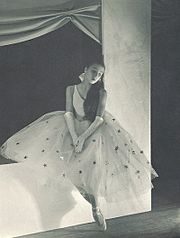Posted: July 26th, 2014 | 2 Comments »
In 1929 the American movie stars Douglas Fairbanks and his wife, “America’s Sweetheart”, Mary Pickford visited Shanghai. Having won the first Oscar, Fairbanks was sent on a world tour to promote Hollywood. 5,000 fans flocked to Woosung to welcome the couple’s ship to Shanghai. However, the KMT government was concerned about the content of some of their films (see this post on The Chinese Mirror Chinese cinema blog). This photo shows Fairbanks and Pickford with the staff of the Mingxing Film Studio with Fairbanks standing next to the Shanghai starlet Hu Die (Butterfly Wu).
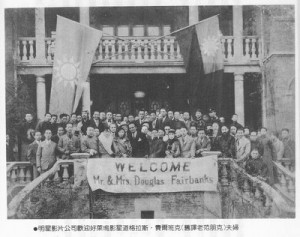

Fairbanks

Pickford
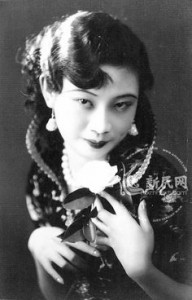 Hu Die
Hu Die
Posted: July 25th, 2014 | No Comments »
An exhibition of photographs of old Limehouse Chinatown, and an interactive map up online too….
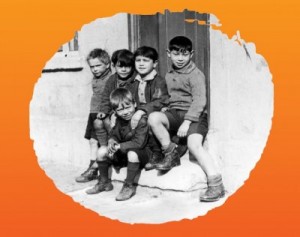
‘The Last Days of Limehouse’ is an exhibition of photos and interactive website and your very own downloadable audio tour to help you discover the fascinating history of Limehouse Chinatown. The exhibition is in the foyer of Limehouse Town Hall. The Limehouse Chinatown Website has an interactive map of the area.
Posted: July 24th, 2014 | 1 Comment »
I’ve blogged repeatedly over the years (since 2008 I just realised) about Beijing’s Chaonei No. 81 (here, here, and here) which has acquired something of a reputation as a haunted house. Of course, unless you are a complete idiot who believes fairies leave money under your pillow when teeth fall out, blokes in red come down chimneys with presents and that there’s an old man with a big beard who lives in the sky, you’ll realise it’s just an old house that has somehow managed to avoid destruction (something of a miracle itself in modern Peking). Interestingly now, thanks to a film “Jingcheng No. 81†or, in English, “The House That Never Dies” apparently (haven’t seen it, don’t know if it’s any good I’m afraid – there’s a trailer here), according to Amy Qin in the New York Times young people are “swarming” to the place.

It is of curse lovely that upwards of 500 people a day are visiting the house, and hopefully they’ll enjoy it, but there seems to be no resolution to what the owners, the Catholic Diocese of Peking, are intending to do with the building. The added interest in the property is not improving it – indeed it has been neglected for years and when I last saw it there was obvious signs of weather and rain related damage (and dumb stuff like windows left open during bad weather, missing roof tiles not replaced etc etc). Th Diocese says its renovation plans await approval – two things here: 1) what are these plans, what’s the budget, where are the funds coming from for renovation etc? – because, as we all know, renovation in Peking can mean a McDonald’s or a Starbucks or worse! all done with faux materials and workmanship and 2) we are all aware of the long game of architectural destruction in Peking (and across China) that lets planning and renovation applications run and run, never quite being approved until a) the place falls down or becomes so dilapidated it cannot be saved or b) a big property developer comes along with a suitcase of cash that appeals more than a sense of history to the local officials.
Anyway, the saga of Chaonei No. 81 continues….
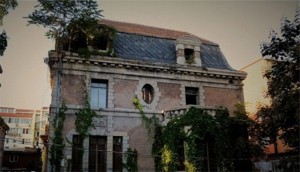
Posted: July 23rd, 2014 | 1 Comment »
Many thanks to Black Publishing of Poland for translating and publishing the Polish language edition of Midnight in Peking – Polnoc w Pekinie. Just 27.92 Zloty’s by the way!
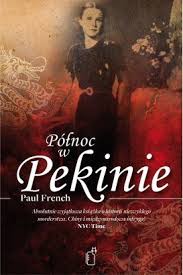
Przeł. Stanisław Tekieli
1937 rok. Kolonialny Pekin. Pewnego dnia córka brytyjskiego konsula nie wraca do domu…
Szokujące morderstwo wstrząsnęło Chinami u progu II wojny światowej. Ciało Pameli Werner znaleziono blisko Lisiej Wieży, poza Dzielnicą Poselstw, w miejscu, które, jak mówią legendy, jest nawiedzane przez duchy zwierząt. Dla chińskiej policji martwa biała dziewczyna oznacza kłopoty, zwłaszcza że stan ofiary wskazuje na czyn brutalnego maniaka. Całe miasto huczy od plotek i podejrzeń. Ku rozpaczy ojca Pameli, śledztwo okazuje się trudniejsze, niż ktokolwiek mógł się spodziewać. Czy uda się je doprowadzić do końca, zanim Japończycy rozpoczną inwazję?
Paul French, historyk i znawca Chin, po wieloletnich badaniach ujawnia, co naprawdę wydarzyło się przed laty.
Książka została wyróżniona prestiżową Nagrodą Brytyjskiego Stowarzyszenia Autorów Powieści Kryminalnych i nagrodą Edgara Allana Poe w kategorii Best Fact Crime.
Posted: July 22nd, 2014 | No Comments »
Mark O’Neill’s From the Tsar’s Railway to the Red Army is now available as part of the Penguin China World War One e-book series…Following his book on the Chinese “Coolie Corps” who worked on Europe’s WW1 battlefields, this short book follows those Chinese who worked in Russia and found themselves caught up in the Bolshevik Revolution…

It is a little known fact that during the First World War Russia received the majority of Chinese wartime labourers working overseas. Despite assurances that they would not be involved in the war, thousands of Chinese workers dug trenches and carried ammunition for troops on the Eastern Front under brutal conditions. Then, in 1917, life for the Chinese worsened with the Bolshevik Revolution’s arrival. Some of the workers signed up to fight for the Red Army and many were left stranded in Russia, unemployed and destitute. Their plight has been described as the most tragic episode in 400 years of Chinese emigration. The men had crossed the border into Russia with dreams of earning enough money to build a house or business for their family at home. None could have imagined the hell that awaited them.
Posted: July 21st, 2014 | No Comments »
This year is of course the 110th anniversary of the Russo-Japanese War. Just as before with the Boxer Rebellion, the Russo-Japanese War inspired a raft of novels based on the war, the fear of invasion from the east (the Yellow Peril) and general concerns following the defeat of a European power by an Asian one.
Emile Driant (below) produced one of the best sellers in this quick fire post-war genre, L’invasion Jaune (The Yellow Invasion), published under the pseudonym Capitaine Danri. Driant was a French army officer and novelist of a decidedly nationalistic bent. The Yellow Invasion was published in 1905. The story depicts the surprise attack against the Western world by a gigantic Sino-Japanese army, covertly equipped with American-made weapons and secretly trained in the remote Chinese hinterland (so all the enemies – Japanese, Chinese and, of course, Les Americans too). The plot is hatched by a Japanese veteran of the Russo-Japanese War coming out of the conflict with a fanatical hatred of Westerners, he organizes a world-spanning secret society named the Devouring Dragon in order to destroy Western civilization.
And there you have it….
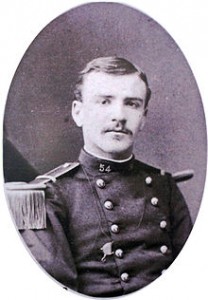
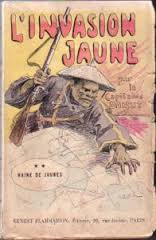
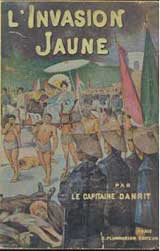

Posted: July 19th, 2014 | No Comments »
Follwoing on from yesterday’s Shanghai ballet post….Several ballet companies and troupes had been formed in Shanghai in the 1920s and 1930s including the Shanghai Variety Ballet, who’s company included Boris Vladimirovich Volkoff (1900-1974). Volkoff had started as a child star dancing, at just nine years of age, with his brother Igor on tour in Warsaw under their family name Baskakoff. After the Bolshevik Revolution he undertook a tour of duty in the Red Army where he was assigned to entertain the troops. He then attended the State Academy of Ballet and Choreography in Moscow, the school of the Bolshoi Ballet, and danced with the Mordkin Ballet. During a tour of Siberia he defected and eventually joined the Shanghai Variety Ballet composed of White Russians based in Shanghai and toured with them throughout China, India, Malaya, Burma, Japan, Hawaii and the United States. Volkoff later moved on to join the company of former Ballets Russes dancer Adolph Bolm in the United States in the late 1920s before becoming a leading figure in the Canadian ballet.

Posted: July 18th, 2014 | No Comments »
Today, a ballerina…In the 1920s Shanghai, largely due to the arrival of so many White Russians, went through a balletomane fad. The future ballerina and inspiration to the choreographer George Balanchine (when she was one of the famous “Baby Ballerina’s†(1903-1984)), Tamara Toumanova, was a White Russian refugee child who saw her first ballet in Shanghai in the 1920s, though didn’t formerly study ballet until her family had moved on from China to Paris.

